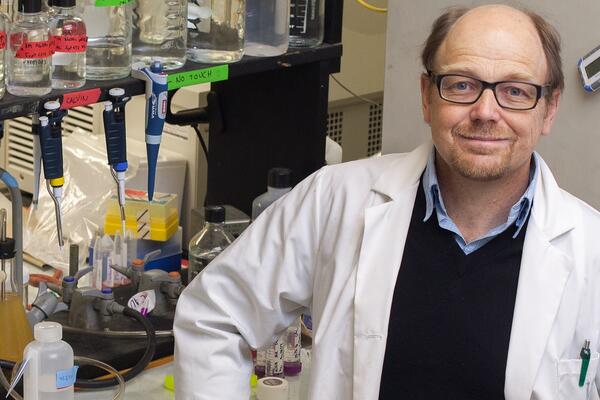Melanie Campbell wants people suffering from Alzheimer’s disease to know they have the fatal illness sooner rather than later. “Early diagnosis has an impact on treatment and will give people a better quality of life,” says Campbell, a professor in the University of Waterloo’s Department of Physics and Astronomy and the School of Optometry and Vision Science.
 Campbell is developing an instrument that will detect Alzheimer’s disease by looking into the eye. “A theme of my research is that the eye is a window to the brain,” she says.
Campbell is developing an instrument that will detect Alzheimer’s disease by looking into the eye. “A theme of my research is that the eye is a window to the brain,” she says.
The new instrument will detect the presence of a protein called amyloid beta on the retina at the rear of the eye. Amyloid beta forms deposits in the brain in the early stages of Alzheimer’s disease. January is Alzheimer’s Awareness Month in Canada.
Campbell and her team of researchers are also working on a technique that she hopes will help doctors determine the severity of Alzheimer’s disease in a patient by examining the appearance and density of the deposits on the retina.
Her goal is to have the instrument and the technique available to family doctors and optometrists one day so that they can use the tool to make referrals to a neurologist. “It would be a more accessible, less expensive and earlier diagnostic tool than brain imaging,” she says. While the disease cannot be cured, there are currently drugs available that can help people have a better quality of life for months and possibly years. Currently, a definitive diagnosis of Alzheimer’s disease can only be given after death with an examination of the brain tissue of the deceased patient.
For her efforts, Campbell and her team of researchers received a grant last fall worth $490,000 from the Canadian Institute of Health Research (CIHR) and the Natural Sciences and Engineering Research Council of Canada (NSERC). Campbell is at the vanguard of the intersection of physics and medicine and says her work would not be possible without the collaboration of people from different disciplines. She says, “I think you absolutely have to have an interdisciplinary group and collaborations across disciplines if you want to solve the emerging medical problems of today.”

 Campbell is developing an instrument that will detect Alzheimer’s disease by looking into the eye. “A theme of my research is that the eye is a window to the brain,” she says.
Campbell is developing an instrument that will detect Alzheimer’s disease by looking into the eye. “A theme of my research is that the eye is a window to the brain,” she says.






